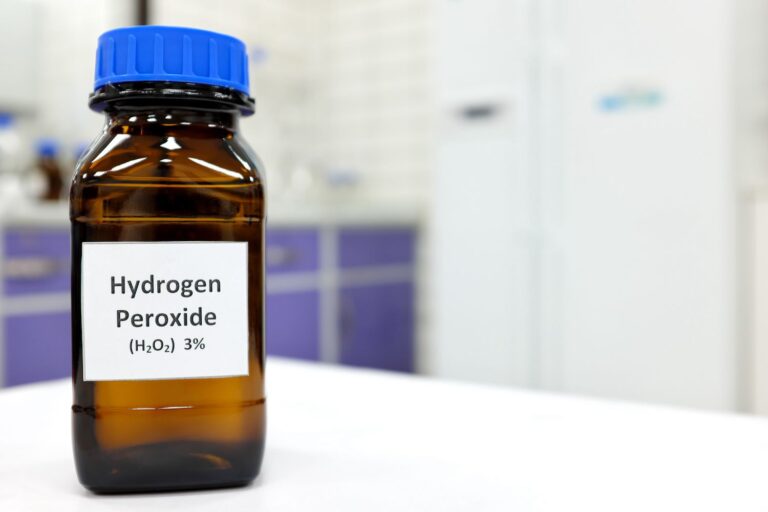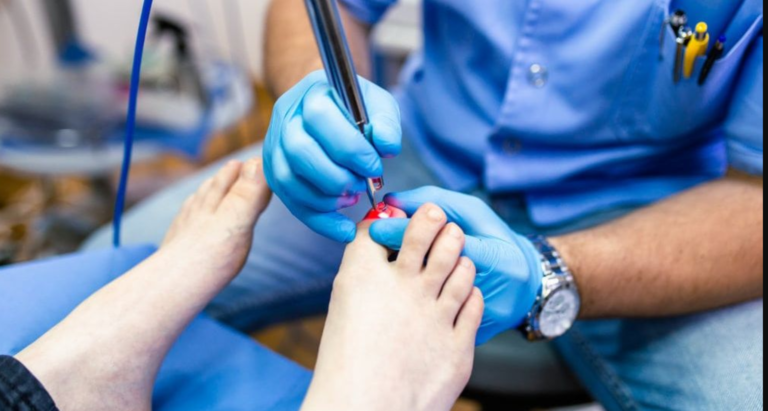Toenail fungus, medically known as onychomycosis, is a common condition that affects many individuals. It can lead to discolored, thickened, and brittle nails, often causing discomfort and embarrassment. While various treatments exist, people frequently ask, “Does bleach kill toenail fungus?” This article explores the efficacy of bleach as a treatment option, delves into alternative remedies, and provides practical advice for managing toenail fungus.
Understanding Toenail Fungus
What is Toenail Fungus?
Toenail fungus is a fungal infection that occurs in or under the toenails. It typically begins as a white or yellow spot under the tip of the nail. As the infection progresses, it can cause the nail to discolor, thicken, and become crumbly or brittle. In some cases, it may lead to pain and difficulty walking.
Causes of Toenail Fungus
Several factors contribute to the development of toenail fungus, including:
- Fungal exposure: Fungi thrive in warm, moist environments. Walking barefoot in communal showers or swimming pools increases exposure.
- Nail injuries: Damage to the nail or surrounding skin can provide an entry point for fungi.
- Poor hygiene: Inadequate foot care can promote fungal growth.
- Underlying health conditions: Conditions like diabetes, weakened immune systems, or circulatory issues can make individuals more susceptible.
Symptoms of Toenail Fungus
Identifying toenail fungus early can lead to more effective treatment. Symptoms include:
- Discoloration (yellow, brown, or white)
- Thickened nails
- Crumbling or brittle texture
- Distorted shape
- Pain or discomfort, especially when pressure is applied
Does Bleach Kill Toenail Fungus?
The Science Behind Bleach
Bleach, a common household disinfectant, contains sodium hypochlorite, a potent antimicrobial agent. It is widely used for cleaning and disinfecting surfaces due to its ability to kill bacteria, viruses, and fungi. The question arises: can it effectively treat toenail fungus?
Efficacy of Bleach on Toenail Fungus
Research on the effectiveness of bleach for treating toenail fungus is limited. Some anecdotal evidence suggests that diluted bleach solutions may reduce fungal growth. However, there are several important considerations:
- Concentration Matters: A highly concentrated bleach solution can be too harsh and may damage healthy skin or nail tissue. A diluted solution is less likely to cause irritation.
- Potential Side Effects: Applying bleach directly to the skin or nails can lead to irritation, burning, or allergic reactions. It may also cause dryness and cracking of the skin around the nails.
- Temporary Results: While bleach may help reduce the appearance of toenail fungus, it does not address the underlying cause. The infection may return if not treated properly.
- Infection Severity: In severe cases, bleach may not be effective enough to eradicate the infection completely. Also read here: Hydrogen Peroxide for Toenail Fungus: A Comprehensive Guide
Safe Usage of Bleach
If considering bleach as a treatment option, it’s essential to use it safely. Here are some guidelines:
- Dilute Properly: Mix one part bleach with ten parts water to create a diluted solution.
- Perform a Patch Test: Apply a small amount to a patch of skin to check for adverse reactions.
- Limit Application: Apply the solution only to the affected nail and surrounding skin, avoiding healthy tissue.
- Rinse Thoroughly: After a few minutes, rinse the area with clean water to remove any residue.
- Moisturize: Follow up with a moisturizer to prevent dryness.
Alternative Treatments for Toenail Fungus
While bleach may provide temporary relief, various other treatments are more commonly recommended for toenail fungus.
Over-the-Counter Antifungal Treatments
Several antifungal medications are available without a prescription. These treatments often come in topical forms such as creams, gels, and nail lacquers. Popular options include:
- Clotrimazole: This antifungal cream is effective against a variety of fungi and is easy to apply.
- Terbinafine: Available as a cream or gel, terbinafine can help clear mild to moderate infections.
- Ciclopirox: This antifungal nail lacquer is applied directly to the infected nail and is effective against fungal infections.
Prescription Medications
For more severe cases, healthcare providers may prescribe stronger antifungal medications, including:
- Oral Antifungals: Medications like terbinafine (Lamisil) and itraconazole (Sporanox) are taken by mouth and can be effective in treating stubborn infections.
- Topical Prescription Treatments: Healthcare providers may recommend stronger topical solutions or lacquers for severe cases.
Home Remedies
Several natural remedies may help manage toenail fungus, although scientific evidence supporting their efficacy varies:
- Tea Tree Oil: Known for its antifungal properties, tea tree oil can be applied directly to the affected nail.
- Apple Cider Vinegar: This natural acid can help create an unfavorable environment for fungi. Mix it with water and soak the affected foot.
- Vicks VapoRub: Some users report success in treating toenail fungus with this mentholated topical ointment.
Laser Treatment
In recent years, laser therapy has emerged as a treatment option for toenail fungus. This non-invasive procedure targets fungal cells without damaging surrounding tissue. Although it may be effective, it can be costly and may not be covered by insurance.
Prevention Strategies
Preventing toenail fungus is often easier than treating it. Here are some strategies to minimize your risk:
Maintain Foot Hygiene
- Wash Your Feet: Clean your feet daily with soap and water, ensuring you dry them thoroughly, especially between the toes.
- Moisturize: Keep your feet moisturized to prevent cracking, which can allow fungi to enter.
Wear Appropriate Footwear
- Choose Breathable Shoes: Opt for shoes made from breathable materials to reduce moisture buildup.
- Rotate Shoes: Allow shoes to dry out completely between uses.
Use Antifungal Powders
- Powders for Prevention: Consider using antifungal powders in your shoes and on your feet to reduce moisture and inhibit fungal growth.
Be Cautious in Public Spaces
- Avoid Walking Barefoot: Use sandals or water shoes in public showers, pools, and locker rooms to reduce exposure to fungi.
Regular Nail Care
- Trim Your Nails: Keep your toenails trimmed and filed to prevent injury and fungal growth.
- Avoid Nail Polish: Refrain from using nail polish on infected nails, as it can trap moisture and worsen the condition.
When to Seek Medical Help
If you suspect you have toenail fungus, seeking medical advice is crucial, especially if:
- The infection is severe or spreading.
- You have underlying health conditions (e.g., diabetes).
- Home treatments are ineffective after several weeks.
Conclusion
In conclusion, the question “Does bleach kill toenail fungus?“ highlights the interest in finding effective solutions for this common ailment. While bleach may offer temporary relief, its use comes with risks and limitations. More reliable treatments, including over-the-counter antifungal medications, prescription options, and home remedies, provide safer and more effective alternatives for managing toenail fungus.
Maintaining proper foot hygiene, wearing appropriate footwear, and seeking timely medical advice are essential for prevention and effective treatment. If you suspect a toenail fungal infection, consult a healthcare professional to determine the best course of action for your specific situation. With the right approach, you can effectively tackle toenail fungus and restore the health of your nails.













